Tire rotation is one of the most important yet often overlooked aspects of vehicle maintenance. Not only does proper tire rotation extend the life of your tires, but it also improves vehicle handling, safety, and fuel efficiency. While many car owners rely on professional services for this task, you can rotate tires at home for a straightforward process that can save you time and money. In this guide, we’ll walk through everything you need to know about tire rotation, from understanding its importance to performing the task yourself.
Why Tire Rotation Matters
Your vehicle’s tires don’t wear evenly by design. Front tires, especially in front-wheel-drive vehicles, typically bear more weight and handling responsibility, leading to faster wear. Regular rotation helps distribute wear patterns across all four tires, ensuring each tire serves its full intended lifespan. Beyond extending tire life, proper rotation provides several key benefits:
Even wear patterns improve vehicle stability and handling, particularly during emergency maneuvers or adverse weather conditions. When tires wear uniformly, they maintain better contact with the road surface, enhancing both safety and performance. Additionally, balanced tire wear can improve fuel efficiency by reducing rolling resistance and ensuring optimal tire contact with the road.
Long-term cost savings are another key benefit. Replacing tires prematurely due to uneven wear can be expensive. By sticking to a regular rotation schedule, you may be able to squeeze thousands of additional miles out of each set of tires.
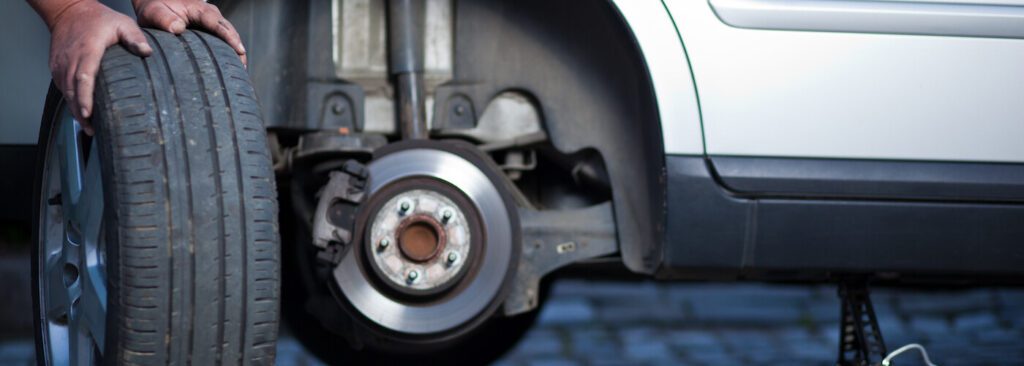
Understanding Tire Wear Patterns
To understand why rotation matters, it helps to recognize the common types of tire wear:
- Toe and camber wear: Caused by misalignment of suspension components.
- Feathering: A condition where the tread ribs develop a slightly rounded edge on one side and a sharp edge on the other.
- Cupping (scalloping): Irregular dips around the tread, usually indicating suspension issues or unbalanced tires.
- Center wear: Caused by overinflation.
- Edge wear: Caused by underinflation or aggressive cornering.
When you rotate your tires, you reduce the likelihood that any one tire will suffer from a particular type of wear for too long. This can enhance your tires’ lifespan and help catch underlying issues with your suspension or alignment before they worsen.
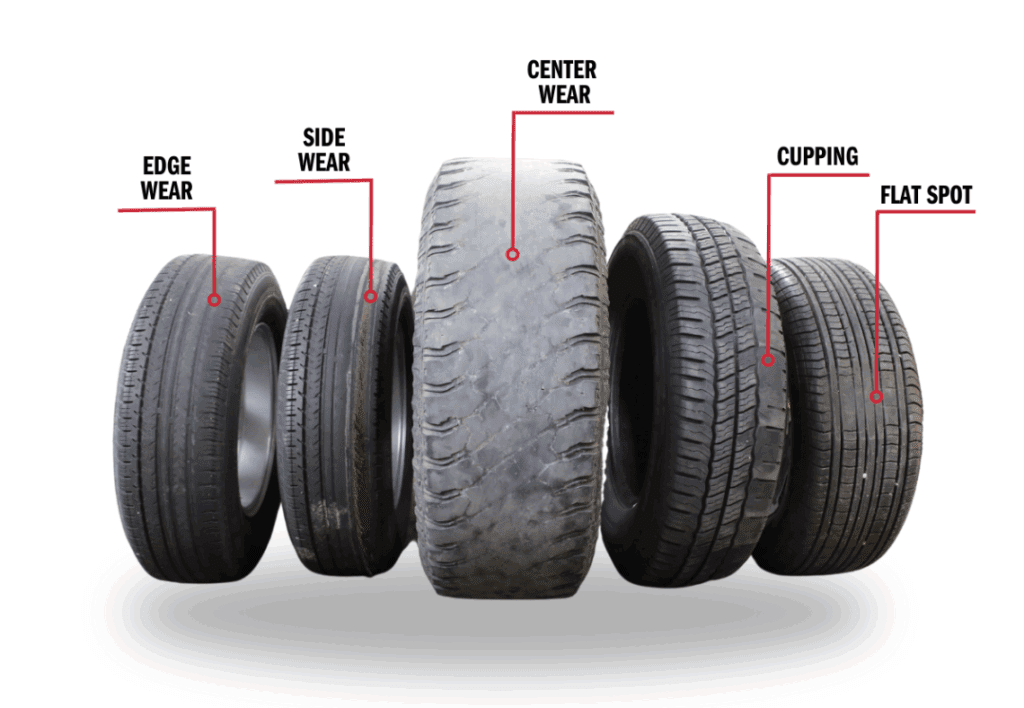
How Often Should You Rotate Your Tires?
The general rule of thumb is to rotate your tires every 5,000 to 7,500 miles, though this can vary based on your vehicle and driving conditions. Many car manufacturers align their recommended rotation intervals with oil change schedules to make maintenance timing easier to remember.
However, certain factors might necessitate more frequent rotations. If you frequently drive on rough roads, carry heavy loads, or do a lot of stop-and-start city driving, you might want to rotate your tires more often. Pay attention to warning signs that could indicate the need for early rotation, such as:
- Noticeable vibrations in the steering wheel or seat
- Vehicle pulling to one side during straight-line driving
- Visibly uneven tire wear patterns
- Significant difference in tire pressure between tires
Additionally, sports cars or performance vehicles with staggered wheel setups (where front and rear wheels are different sizes) may have special instructions or limitations for tire rotation. Always refer to your owner’s manual.
Essential Tools and Preparation
Before beginning the rotation process, gather these necessary tools:
- A car jack rated for your vehicle’s weight
- Jack stands (never rely on the jack alone)
- Lug wrench
- Torque wrench
- Wheel wedges or blocks
- Work gloves
- Flashlight
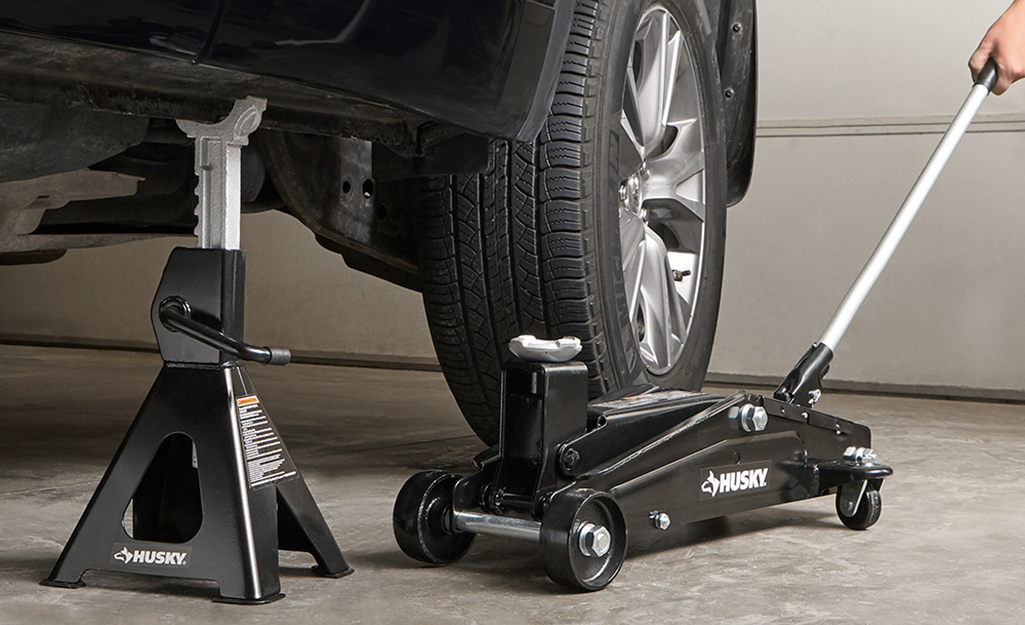
Safety should be your primary concern. Choose a flat, level surface for the job, preferably concrete or asphalt. Ensure you have adequate lighting and enough space to move around the vehicle comfortably. Always engage your parking brake and use wheel blocks on the wheels that will remain on the ground during lifting.
If you’re working outdoors, check the weather forecast and avoid rotating tires on wet or icy surfaces. Dry conditions and clear visibility make the process safer and more manageable.
Step-by-Step Guide to Rotating Your Tires
1. Initial Preparation
Start by parking your vehicle on a flat surface and engaging the parking brake. Place wheel blocks behind the wheels that will remain on the ground. Before lifting the vehicle, use your lug wrench to break loose (but don’t remove) the lug nuts on all wheels you’ll be rotating. This is much safer than trying to loosen them when the vehicle is elevated.
2. Lifting the Vehicle
Consult your owner’s manual for proper jack points – using the wrong lifting points can damage your vehicle. Position your jack under the appropriate point and lift until the tire is just off the ground. Place a jack stand under a solid structural point (again, consult your manual) and lower the vehicle onto it. Repeat this process for all wheels that need to be rotated.
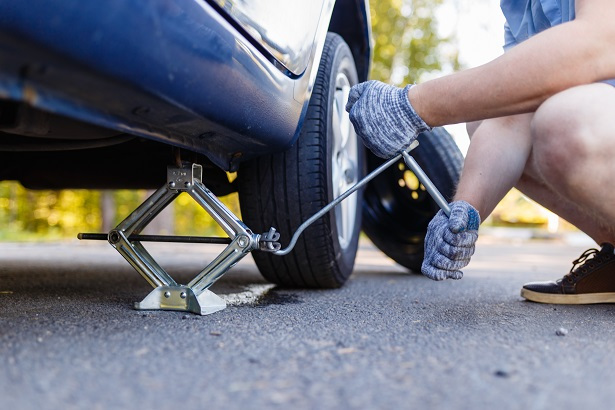
3. Rotation Pattern
The correct rotation pattern depends on your vehicle’s drive type:
- Front-wheel drive vehicles:
Rotate the front tires straight back to the rear.
Rotate the rear tires to the opposite sides of the front. - Rear-wheel drive vehicles:
Rotate the rear tires straight forward to the front.
Rotate the front tires to the opposite sides of the rear. - All-wheel drive or four-wheel drive vehicles:
Use a cross pattern, moving each tire diagonally to its new position.
Some vehicles use directional tires, which are designed to roll in a specific direction. These tires should only be rotated front-to-back on the same side.
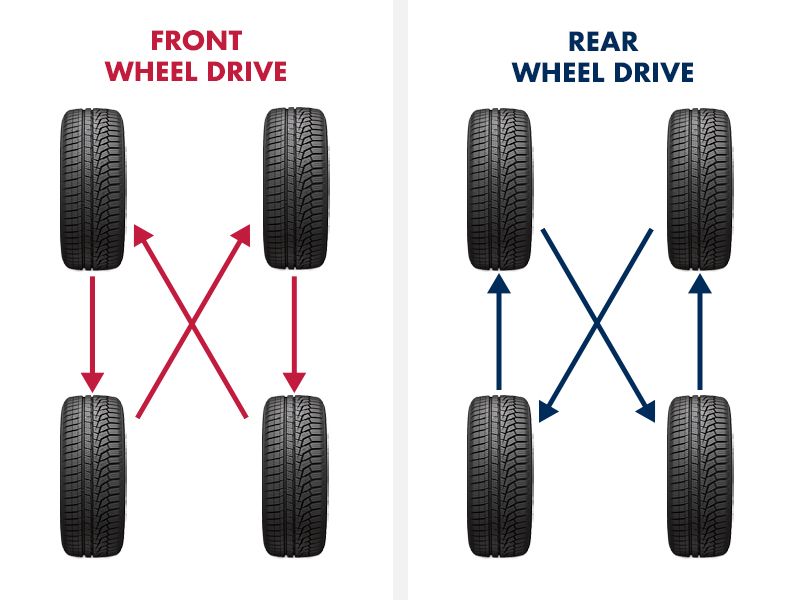
4. Proper Installation
When mounting each tire in its new position, ensure it’s properly seated against the hub before threading the lug nuts. Hand-tighten the nuts in a star pattern to ensure even pressure. Don’t fully tighten any lug nuts until the vehicle is back on the ground.
5. Final Steps
Once all tires are mounted in their new positions, carefully lower the vehicle back to the ground. Using your torque wrench, tighten all lug nuts to your vehicle manufacturer’s specifications, working in a star pattern. Most passenger vehicles require between 80 and 100 foot-pounds of torque, but check your owner’s manual for the exact specification.
Post-Rotation Maintenance
After completing the rotation, check the air pressure in all tires and adjust as needed. Take your vehicle for a short test drive, paying attention to any unusual vibrations or pulling. If you notice any issues, double-check your work, particularly the torque on all lug nuts.
Keep a log of your tire rotations, either in your vehicle’s maintenance book or using a smartphone app. This helps you maintain a proper rotation schedule and can be valuable information when it’s time to replace your tires.
Signs Your Tires May Be Due for Rotation or Replacement
Even with regular rotation, tires don’t last forever. Watch for the following signs that your tires may need to be rotated or replaced altogether:
- Tread depth below 2/32 of an inch
- Visible tire cord or sidewall cracks
- Persistent thumping or vibration during driving
- Irregular or scalloped wear patterns
- Excessive road noise
Regularly inspect your tires by performing the penny test—insert a penny into the tread with Lincoln’s head facing down. If you can see all of his head, your tread is too worn.
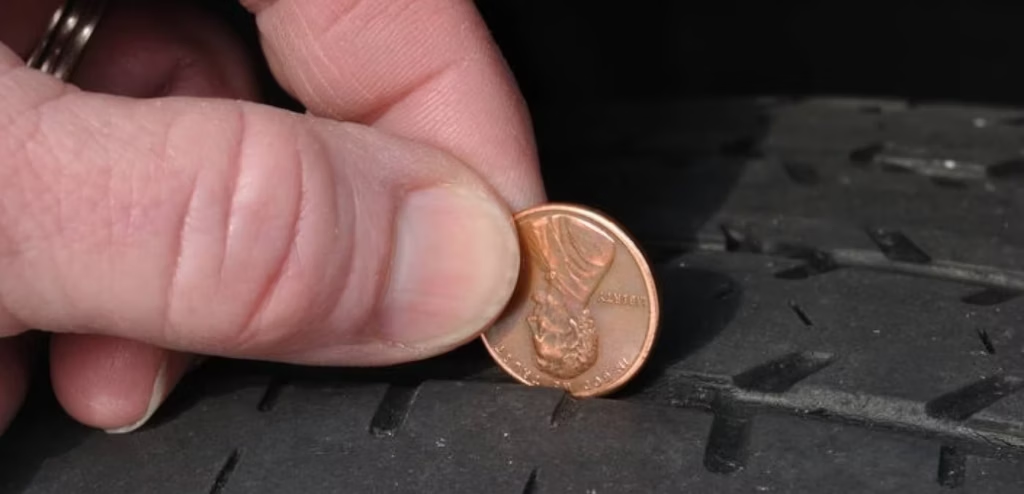
The Role of Alignment and Balancing
Tire rotation alone won’t fix alignment or balance issues, but it can reveal them. If, after a rotation, you notice consistent pulling or uneven wear returning quickly, it’s worth scheduling a wheel alignment or tire balancing service.
Wheel alignment ensures your tires are angled correctly, which maximizes tire life and improves handling. Tire balancing distributes weight evenly across all four wheels and helps prevent vibrations.
Combining rotation with these services ensures a smoother ride and maximum tire longevity.
Common Mistakes to Avoid
Even well-intentioned DIYers make mistakes. Avoid these pitfalls:
- Forgetting to torque lug nuts to manufacturer specs
- Rotating directional tires incorrectly
- Not checking tire pressure post-rotation
- Using unstable or improper jack points
- Skipping the vehicle owner’s manual
If you’re unsure, consult a professional the first time or have a friend with experience help walk you through it.
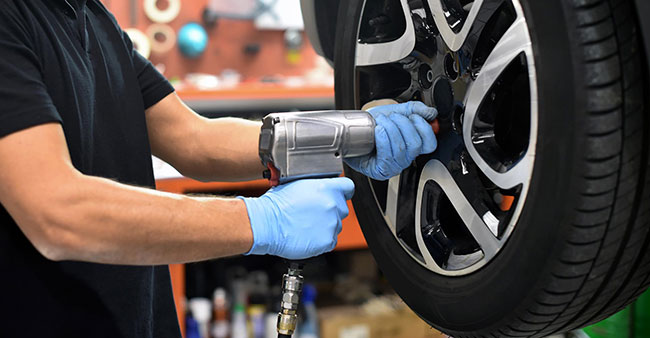
Pro Tips for Successful Tire Rotation
- Mark the previous position on each tire with chalk to track rotation patterns
- Use a tire rotation app or set reminders to stay consistent
- Keep an eye on tire warranties—some require documented rotations
- Clean the brake components while the tires are off for extra value
- Rotate your spare into the pattern if your vehicle uses a full-size spare
Adding these little steps can help you get more out of your maintenance routine.
The Environmental and Economic Impact
By rotating your tires regularly, you’re not only saving money—you’re reducing environmental waste. Tire manufacturing is resource-intensive, and worn-out tires often end up in landfills. Getting the most life out of each set means fewer tires produced and discarded over your vehicle’s lifespan.
Furthermore, improved fuel efficiency from even tread wear reduces your carbon footprint. In that sense, tire rotation is a small but meaningful step toward more eco-friendly driving habits.
Common Mistakes to Avoid During Tire Rotation
Even though tire rotation is a fairly simple maintenance task, it’s still possible to make mistakes that can affect your vehicle’s performance and safety. One of the most common errors is neglecting to tighten lug nuts to the proper torque specification. Under-tightened lug nuts can lead to wheel vibration or, in severe cases, the wheel detaching while driving. Over-tightening, on the other hand, can warp brake rotors or strip the threads on the studs.
Another frequent issue is forgetting to check tire pressure after rotation. Tires may have different air pressure needs depending on their new location, especially in vehicles where front and rear tires are inflated to different levels. Always consult your vehicle’s placard or owner’s manual for correct tire pressure specifications.
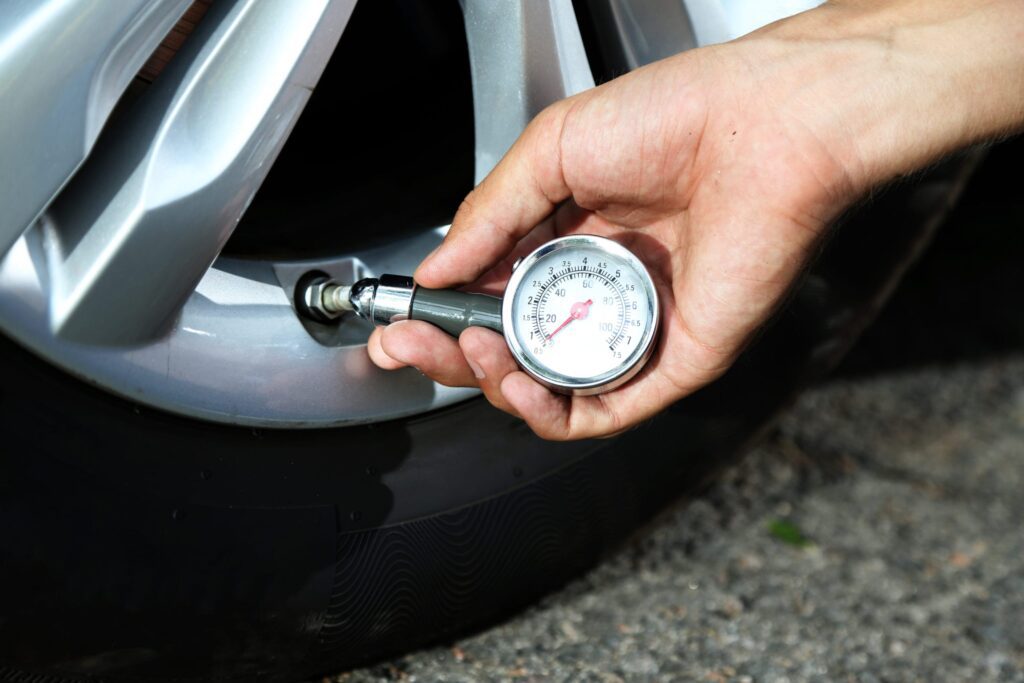
People also often overlook rotation patterns. Using the wrong pattern—especially for directional tires or staggered tire setups—can lead to decreased performance or even tire damage. Directional tires are designed to rotate in one direction only, and they should never be swapped side to side. If your vehicle has staggered tires (different sizes on the front and rear), rotation may not be possible at all, and you’ll need to replace tires in pairs or sets instead.
How Tire Rotation Affects Other Vehicle Components
Tire rotation doesn’t just benefit your tires—it also plays a role in preserving other important vehicle systems. Unevenly worn tires can place unnecessary stress on suspension components, leading to premature wear of shocks, struts, and bushings. This can create alignment problems or reduce ride comfort over time.
Moreover, irregular tire wear can affect your vehicle’s alignment. A properly rotated tire set allows the suspension system to operate within its intended parameters, which means your steering and handling stay precise. This is particularly important if your vehicle features advanced driver assistance systems (ADAS), such as lane-keeping or automatic braking, which rely heavily on accurate steering input and balanced traction.
Even your braking system can benefit from regular tire rotation. When tires wear evenly, they help maintain consistent brake force distribution across all four wheels, reducing the risk of skidding or uneven stopping power. In emergency braking scenarios, this balance can make all the difference in maintaining control of your vehicle.
Conclusion
Regular tire rotation is a crucial aspect of vehicle maintenance that directly impacts your safety, comfort, and wallet. While it might seem daunting at first, rotating your tires at home is a manageable task that can save you money and ensure the job is done correctly. By following proper safety procedures and maintaining a consistent rotation schedule, you’ll extend the life of your tires and improve your vehicle’s overall performance.
Remember to always consult your vehicle’s owner’s manual for specific recommendations regarding rotation intervals and patterns. With practice, you’ll find that tire rotation becomes a straightforward part of your regular maintenance routine, helping you get the most value and performance from your tires.
In the long run, a little effort in the garage can translate into better traction, smoother rides, and a safer, more efficient vehicle. So grab your tools, set aside an hour or two, and give your tires the attention they deserve.